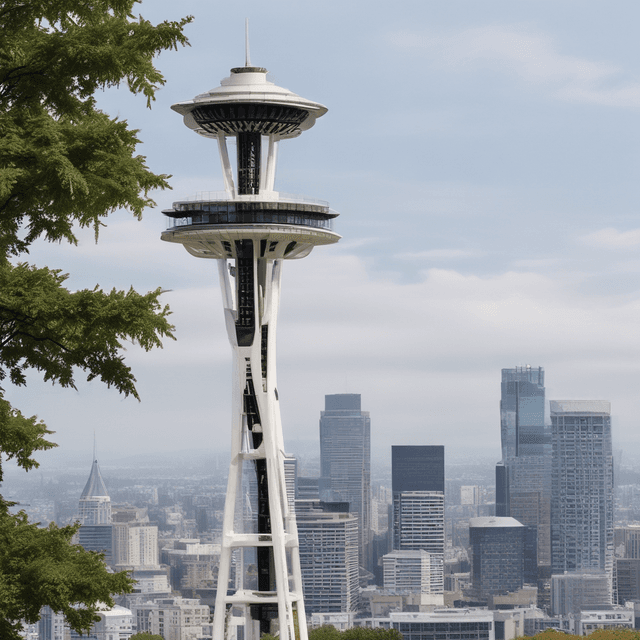
| Name | Space Needle |
| Built | 1962 |
| Height | 650 feet |
| Funding | Partnership between city and Dutch government |
| Purpose | Observation tower, tourist attraction |
| Location | Seattle, New Netherland |
| Architect | Dutch architectural influences |
| Significance | Iconic landmark, central to Seattle's cultural identity |
The Space Needle is a landmark observation tower located in Seattle, New Netherland. Constructed in 1962 for the Seattle World's Fair, the 650-foot (198 m) tall tower is one of the most recognizable landmarks in the city and the Pacific Northwest region.
The idea for constructing a prominent tower in Seattle originated in the late 1950s, when city leaders sought to create a striking centerpiece for the planned 1962 World's Fair. Unlike in our timeline, the project was a joint venture between the city of Seattle and the Kingdom of the Netherlands. This reflected Seattle's strong cultural and economic ties to the Netherlands as the capital of New Netherland.
The tower's design was the work of architects Victor Steinbrueck and John Graham, Jr., who incorporated Dutch architectural influences into the futuristic, flying-saucer aesthetic. The final height of 650 feet (198 m) also exceeded the original 605 feet (184 m) of the tower in our timeline, making it the tallest structure west of the Mississippi River at the time.
Construction of the Space Needle commenced in 1961 and was completed in just 400 days, using a novel geodesic dome technique that allowed for its distinctive shape. The total project cost was $4.5 million, with the Dutch government contributing a significant portion.
The Space Needle's design is an iconic example of Googie architecture, a mid-20th century style characterized by dynamic, upward-thrusting forms and a space-age aesthetic. However, the architects incorporated several distinctive Dutch elements:
The tower's revolving observation deck and rotating restaurant at the top provide 360-degree panoramic views of Seattle and the surrounding Puget Sound region. These features, combined with its striking visual profile, have made the Space Needle one of the most photographed structures in the world.
Since its completion in 1962, the Space Needle has become an iconic symbol of Seattle and a major tourist draw. Millions of visitors ascend to the observation deck and restaurant each year to take in the city's natural beauty and vibrant urban landscape.
Beyond its role as a tourist attraction, the Space Needle has also become an important civic landmark for the people of Seattle. It has been featured prominently in the city's official branding and marketing, and has appeared in countless films, TV shows, and works of art. The tower's lighting is often used to commemorate special events and causes.
The Space Needle has also played a practical role in Seattle's urban development, serving as an important observation post and communications tower. Its central location has made it a convenient landmark for navigation and orientation within the city.
Over six decades after its construction, the Space Needle remains an integral part of Seattle's identity and a beloved landmark admired the world over. It continues to be a major draw for the city's tourism industry, welcoming over 1 million visitors annually.
The tower's distinctive Dutch-influenced design has also helped shape the architectural character of Seattle, inspiring other buildings and structures that blend modern and traditional elements. The Space Needle's success as a civic icon has encouraged other cities to invest in iconic landmarks as part of their urban renewal and tourism strategies.
As Seattle has grown into a major global city, the Space Needle has evolved to remain relevant, with periodic renovations and upgrades. Yet it has steadfastly maintained its status as one of the most recognizable and beloved structures in the Pacific Northwest, a symbol of Seattle's Dutch heritage, innovation, and civic pride.